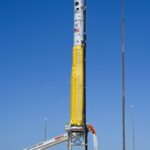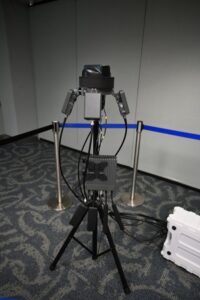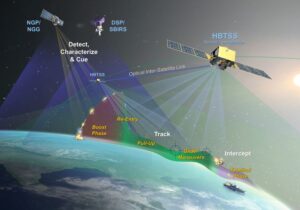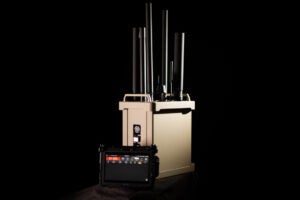
By Joe Kochan, CEO, National Spectrum Consortium
The proposed Golden Dome isn’t just a new missile defense system; it’s a massive feat of engineering. Building it will require integrating radars, satellites, and missile interceptors into a complex network of systems at a scale not seen before. And there is an additional challenge: this network must operate in an already congested electromagnetic spectrum, or it risks catastrophic failure.
The fight over who gets to use our airwaves isn’t new. For years, we have argued over this finite resource. Radio waves power everything from our daily 5G service to the GPS satellites we rely on for weather and navigation. They also fuel the critical military and intelligence operations that a system like the Golden Dome requires.
We need to help our warfighters build this system and meet this Administration’s ambitious three-year deadline. The Department of Defense and the private sector must join forces to create new wireless solutions — and they must do it quickly.
The government has two powerful tools at its disposal. Public-private research partnerships can accelerate wireless innovation, and a contracting vehicle called an Other Transaction Authority (OTA) can help break through bureaucratic red tape that sometimes mires the DoD procurement process.
Public-private partnerships fuel fresh perspectives. At the National Spectrum Consortium, we connect government entities not only to commercial innovators but also to our diverse membership, including communications companies, non-traditional defense suppliers, startups, and researchers.
I have seen firsthand how partnerships among our members and with the DoD can revolutionize how we deliver critical technologies to our warfighters. We have successfully connected the Department of Defense to our more than 300 industry and academic members to produce innovative wireless technologies. Together, we have delivered breakthroughs like a dynamic spectrum-sharing tool that reduces the time it takes to find signal interference from days to minutes. We also built a private 5G network that powers a prototype smart warehouse, which has reduced equipment processing time, minimized risk for dangerous tasks, and improved inventory accuracy.
Further investment in this type of wireless innovation is critical for missile defense. With limited spectrum resources, we need every technological advantage to ensure national security success.
We also need every procurement advantage. It is not enough to develop new technology; we must make sure the DoD can acquire and deploy it. A streamlined procurement vehicle, like an Other Transaction Authority (OTA), gives the military the power to tap into the rapid innovation happening in the private sector to defend our nation. It bypasses some of the more onerous requirements of technology acquisition and aligns with current approaches to defense procurement reform. An OTA opens the door to non-traditional contractors and creates a pathway for rapid iteration, leading to at-scale production.
To make President Trump’s “golden promise” a reality, the government must invest in spectrum technology R&D and fully utilize public-private partnerships and tools like the OTA. By overcoming bureaucratic delays and embracing American ingenuity, we can ensure our missile defense system is ready for the modern threat environment.

Are you a Defense Daily reader with a thought-provoking opinion on a defense issue? We want to hear from you.
- We welcome submissions of opinion articles on national security, defense spending, weapons systems and related areas.
- We welcome submissions from lawmakers, administration officials, industry representatives, military officials, academics, think tank experts, congressional candidates, international experts and others on issues important to the national defense community.
- We welcome a diverse range of opinions all along the political spectrum.
- Email: editor@DefenseOpinion.com













